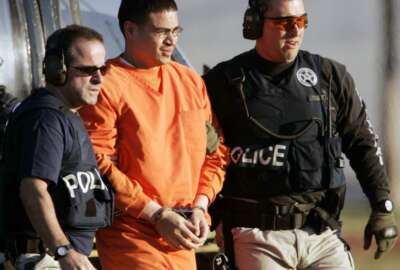The NIBIN (National Integrated Ballistics Information Network) system is 22 years old, but a recent upgrade from 2D to 3D images has made it more effective in helping the Bureau of Alcohol, Tobacco, Firearms and Explosives — and its state and local partners — catch shooters than it ever was before.
NIBIN takes images of cartridges recovered from crime scenes or test-fired by law enforcement. Specifically, it captures three areas of interest where the firing of a gun leaves unique marks on the cartridge case. Those are the firing pin impression, the breach face marks left on the head of the case when the gun is fired, and the ejector mark left when the cartridge is ejected from a semi-automatic weapon.
When NIBIN first came out, those images were two dimensional, and harder to match up.
“When you made an association in the database, you still needed a firearms examiner to take a look at the physical evidence and make the final connection, what we call the NIBIN hit,” said Chris Amon, chief of firearms operations at ATF. “Now what has evolved throughout the past five years to HD 3D technology upgrades, is we now have the ability to make what we call a NIBIN lead, which is an association made through technology on the screen by a qualified technician or an examiner. And we’re able to push that lead in real time out to investigators, so they can start their investigation without having to wait for the final confirmation.”
Amon said less than 2% of NIBIN leads have to be confirmed in court. In those cases, a firearm examiner would still have to verify the conclusion of the NIBIN system. But by shifting that process to the back end of the investigation, it means ATF can get more information in the hands of investigators within 24 to 48 hours.
But NIBIN’s accuracy isn’t the only thing that’s improved since the upgrades. Amon said the hit ratio, the percentage of leads generated in relation to data uploaded, has risen from around 3% to an average of 15-20%, and as high as 40% in certain cities.
And even if no lead is generated, that data point is now within NIBIN’s database, which can help solve future crimes, or identify suspects down the road.
“Let’s say that there’s a homicide scene and the officers and crime scene technicians arrive, and they find cartridge cases on the scene. They’ll recover those cartridge cases, bring them either to a laboratory or … their local NIBIN site,” Amon said. “Let’s say there’s no association. So the technician reviews the database and there’s no leads that are found. There’s no association made in the database. So let’s say a firearm was recovered during a traffic stop two days later, in the waistband of an individual. That firearm will then be test fired, that exemplar cartridge case will be uploaded into NIBEN, that technician will now review and will be able to make that correlation between the test fire firearm and the homicide that occurred two days earlier.”
And NIBIN’s database is huge. These 3D images take up more space than the old two-dimensional ones, and as the program expands, more images are coming in every day. Amon said ATF uploaded 205,000 images into NIBIN in 2015. In 2019, ATF is on track for almost 400,000 images.
NIBIN’s database currently operates on two physical servers, one on each coast. But ATF plans to move to cloud-based architecture by 2020, in order to more easily scale up its ability to expand its server pace, as well as reduce latency and relieve stress on the servers.
“When everybody’s searching at the same time, the servers can experience stress. So we believe going to the cloud, the ability to expand that space far easier, then we can do that now will help with the speed of the network,” Amon said. “It currently takes about eight minutes to capture the image. And then it takes a technician anywhere from the low end — 15 minutes — to the high end — 45 minutes — to search the database and make those associations so they can find the lead.”
Copyright
© 2024 Federal News Network. All rights reserved. This website is not intended for users located within the European Economic Area.
